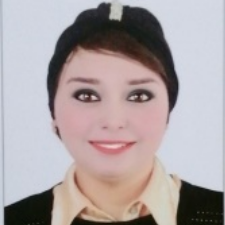
Rania Ahmed
Work place: Faculty of Computers and Artificial Intelligence, Modern University for Technology & Information, Cairo, Egypt
E-mail: rmohamed@cs.mti.edu.eg
Website:
Research Interests:
Biography
Dr. Rania Ahmed, Assistant professor at the faculty of Computers and Artificial Intelligence in Modern University for Technology and Information. Dr. Rania Ahmed is Lecturer science 2017; she got her PhD from the Menoufia University in Egypt in 2017 in Computer Science. In the field of Artificial Intelligence. She received the Bachelor in Computer Science degree from the Helwan University in 2006 and the Master in Computer Science degree from the Helwan University in 2010. In 2008 she worked as a Teacher in Faculty of Computers and Artificial Intelligence, Modern University. Dr. Rania has academic publications which include papers in international journals and conference proceedings. Her publications have appeared in international journals, conferences, and publishing houses such as Springer and Science Direct (Elsevier). Currently, Dr Rania is a member of the Scientific Research School of Egypt (SRSEG).
Author Articles
Infrared Images Spectra Multi-class Classification Model Based on Deep Learning
By Asmaa S. Abdo Kamel K. Mohammed Rania Ahmed Heba Alshater Samar A. Aly Ashraf Darwish Aboul Ella Hassanein
DOI: https://doi.org/10.5815/ijisa.2024.04.02, Pub. Date: 8 Aug. 2024
The classification of Fourier Transform Infrared spectra images is crucial in chemometrics. This paper proposes an efficient model based on deep learning approaches for enhancement and classification of the Fourier Transform Infrared Spectra (FTIR) images. The proposed model integrates three deep learning models including ResNet101, EfficientNetB0, and Wavelet Scattering transform (WST) to extract several features from FTIR. Then the obtained features were fused in conjunction with standard statistical feature extraction. It followed by a subsequent classification phase that employs a Convolutional Neural Network (CNN) architecture, which demonstrates high accuracy in classifying the infrared spectra images into six different classes of ligands and their metal complexes. During the training phase, the network’s weights are iteratively updated using the Adam optimization algorithm. This model addresses the challenge of small and imbalanced datasets through an image oversampling process. Using random over-sampling technique, it enhances the training process and overall classification performance. The extracted features were analyzed using t-distributed Stochastic Neighbor Embedding (t-SNE) to visualize high-dimensional data in two dimensions. The results of the proposed model show high classification accuracy of 0.91%, low error rate of 0.08%, a sensitivity of 0.89% and a precision of 0.89%, false positive rate of 0.01%, F1 score of 0.89, Matthews Correlation Coefficient of 0.87 and Kappa of 0.68.
[...] Read more.Other Articles
Subscribe to receive issue release notifications and newsletters from MECS Press journals